Real-Time Visual Feedback in Singing Pedagogy: Current Trends and Future Directions
Abstract
Featured Application
Abstract
1. Introduction
2. The Respiratory Subsystem
2.1. Breathing Patterns
2.2. Subglottal Pressure
3. The Oscillatory Subsystem
3.1. Vocal Folds Contact Variations
3.2. Flow Glottograms
4. The Resonatory System
4.1. Spectrographic Displays
4.2. Voice Breaks
4.3. Phonation Types
4.4. Intentional Voice Distortion
4.5. Intonation
5. Conclusions
Author Contributions
Funding
Informed Consent Statement
Data Availability Statement
Acknowledgments
Conflicts of Interest
References
- Harrison, S.D.; O’Bryan, J. Teaching Singing in the 21st Century; Springer: Dordrecht, The Netherlands, 2014; ISBN 978-94-017-8850-2. [Google Scholar]
- Lã, F.M.B.; Gill, B.P. Physiology and Its Impact on the Performance of Singing. In The Oxford Handbook of Singing; Welch, G.F., Howard, D.M., Nix, J., Eds.; Oxford University Press: Oxford, UK, 2019; pp. 66–84. ISBN 9780199660773. [Google Scholar]
- Herbst, C.T.; Qiu, Q.; Schutte, H.K.; Švec, J.G. Membranous and cartilaginous vocal fold adduction in singing. J. Acoust. Soc. Am. 2011, 129, 2253–2262. [Google Scholar] [CrossRef] [PubMed]
- Lã, F.M.B. Teaching Singing and Technology. In VOX HUMANA, Fachzeitschrift für Gesangspädagogik; Basa, K.S., Ed.; BDG e.V: Nürnberg, Germany, 2012; pp. 88–109. ISBN 1861-065X. [Google Scholar]
- Lennon, M.; Reed, G. Instrumental and vocal teacher education: Competences, roles and curricula. Music Educ. Res. 2012, 14, 285–308. [Google Scholar] [CrossRef]
- Lã, F.M.B. Prácticas Vocales Basadas En La Evidencia. Rev. Logop. Foniatr. Audiol. 2017, 37, 180–187. [Google Scholar] [CrossRef]
- Hallam, S.; Gaunt, H. Preparing for Success: A Practical Guide for Young Musicians; Institute of Education-London: London, UK, 2012; ISBN 978-0854739035. [Google Scholar]
- Lã, F.M.B. Learning to Be a Professional. In Advanced Musical Performance: Investigations in Higher Education Learning; Routledge: Abingdon, UK, 2016; pp. 297–318. ISBN 9781597560788. [Google Scholar]
- Nair, G.; Howard, D.M.; Welch, G.F. Practical Voice Analyses and Their Application in the Studio. In The Oxford Handbook of Singing; Oxford University Press: Oxford, UK, 2019; pp. 1048–1070. [Google Scholar] [CrossRef]
- Gill, B.P.; Herbst, C.T. Voice pedagogy—What do we need? Logop. Phoniatr. Vocology 2015, 41, 168–173. [Google Scholar] [CrossRef] [PubMed]
- Ragan, K. Defining Evidence-Based Voice Pedagogy: A New Framework. Voice Pedagog. 2018, 75, 157–160. [Google Scholar]
- Crocco, L.; Meyer, D. Motor Learning and Teaching Singing: An Overview. J. Sing. 2021, 77, 693–702. [Google Scholar]
- Titze, I.R.; Abbott, K.V. Vocology: The Science and Practice of Voice Habilitation; National Center for Voice and Speech: Salt Lake City, UT, USA, 2012; ISBN 978-0-9834771-1-2. [Google Scholar]
- Roth, D.F.; Verdolini Abbott, K. Vocal Health and Singing Pedagogy: Considerations from Biology and Motor Learning. In Teaching Singing in the 21St Century; Harrison, S.D., O’Bryan, J., Eds.; Springer: Dordrecht, The Netherlands, 2014; pp. 69–89. [Google Scholar]
- Crocco, L.; McCabe, P.; Madill, C. Principles of Motor Learning in Classical Singing Teaching. J. Voice 2019, 34, 567–581. [Google Scholar] [CrossRef]
- Welch, G.F.; Howard, D.M.; Himonides, E.; Brereton, J. Real-time feedback in the singing studio: An innovatory action-research project using new voice technology. Music Educ. Res. 2005, 7, 225–249. [Google Scholar] [CrossRef]
- Howard, D.M. Technology for Real-Time Visual Feedback In Singing Lessons. Res. Stud. Music Educ. 2005, 24, 40–57. [Google Scholar] [CrossRef]
- Sundberg, J. The Science of the Singing Voice; Northern Illinois University Press: Dekalb, IL, USA, 1987. [Google Scholar]
- Howard, D.M.; Brereton, J.; Welch, G.F.; Himonides, E.; DeCosta, M.; Williams, J.; Howard, A.W. Are Real-Time Displays of Benefit in the Singing Studio? An Exploratory Study. J. Voice 2006, 21, 20–34. [Google Scholar] [CrossRef]
- Sundberg, J. Flow Glottogram and Subglottal Pressure Relationship in Singers and Untrained Voices. J. Voice 2017, 32, 23–31. [Google Scholar] [CrossRef] [PubMed]
- Stark, J. Bel Canto: A History of Vocal Pedagogy (Review), 1st ed.; University of Toronto Press: Toronto, ON, Canada, 1999; Volume 58, ISBN 0802086144. [Google Scholar]
- Herbst, C.T. A Review of Singing Voice Subsystem Interactions—Toward an Extended Physiological Model of “Support”. J. Voice 2016, 31, 249.e13–249.e19. [Google Scholar] [CrossRef]
- Leanderson, R.; Sundberg, J.; von Euler, C. Breathing muscle activity and subglottal pressure dynamics in singing and speech. J. Voice 1987, 1, 258–261. [Google Scholar] [CrossRef]
- Iwarsson, J.; Thomasson, M.; Sundberg, J. Effects of lung volume on the glottal voice source. J. Voice 1998, 12, 424–433. [Google Scholar] [CrossRef]
- Thomasson, M.; Sundberg, J. Consistency of Inhalatory Breathing Patterns in Professional Operatic Singers. J. Voice 2001, 15, 373–383. [Google Scholar] [CrossRef]
- Salomoni, S.; Hoorn, W.V.D.; Hodges, P. Breathing and Singing: Objective Characterization of Breathing Patterns in Classical Singers. PLoS ONE 2016, 11, e0155084. [Google Scholar] [CrossRef]
- Watson, P.J.; Hixon, T.J. Respiratory Kinematics in Classical (Opera) Singers. J. Speech Lang. Hear. Res. 1985, 28, 104–122. [Google Scholar] [CrossRef] [PubMed]
- Thorpe, C.; Cala, S.J.; Chapman, J.; Davis, P.J. Patterns of breath support in projection of the singing voice. J. Voice 2001, 15, 86–104. [Google Scholar] [CrossRef]
- Binazzi, B.; Lanini, B.; Bianchi, R.; Romagnoli, I.; Nerini, M.; Gigliotti, F.; Duranti, R.; Milic-Emili, J.; Scano, G. Breathing pattern and kinematics in normal subjects during speech, singing and loud whispering. Acta Physiol. 2006, 186, 233–246. [Google Scholar] [CrossRef]
- Ternström, S.; D’Amario, S.; Selamtzis, A. Effects of the Lung Volume on the Electroglottographic Waveform in Trained Female Singers. J. Voice 2020, 34, 485.e1–485.e21. [Google Scholar] [CrossRef]
- Heldner, M.; Włodarczak, M.; Branderud, P.; Stark, J. The RespTrack System. In Proceedings of the 1st International Seminar on the Foundations of Speech—Pausing, Breathing and Voice, Sønderborg, Denmark, 1–3 December 2019; pp. 16–18. [Google Scholar]
- Titze, I.R. Simulation of Vocal Loudness Regulation with Lung Pressure, Vocal Fold Adduction, and Source-Airway Interaction. J. Voice 2021, in press. [Google Scholar] [CrossRef] [PubMed]
- Patel, R.R.; Sundberg, J.; Gill, B.; Lã, F.M. Glottal Airflow and Glottal Area Waveform Characteristics of Flow Phonation in Untrained Vocally Healthy Adults. J. Voice 2020, 36, 140.e1–140.e21. [Google Scholar] [CrossRef] [PubMed]
- Herbst, C.T.; Hess, M.; Müller, F.; Švec, J.G.; Sundberg, J. Glottal Adduction and Subglottal Pressure in Singing. J. Voice 2015, 29, 391–402. [Google Scholar] [CrossRef] [PubMed]
- Welch, G.F. Solo Voice. In The Oxford Handbook of Music Performance; Parncutt, R., McPherson, G.E., Eds.; Oxford University Press: Oxford, UK, 2002; Volume 2, pp. 377–398. ISBN 9780195138108. [Google Scholar]
- Sundberg, J.; La, F.M.B. Avaliação Aerodinâmica e Acústica Da Fonte De Voz. In Fundamentos e Atualidades Em Voz Profissional; Lopes, L., Moreti, F., Zambon, F., Vaiano, T., Eds.; Thieme Revinter: São Paulo, Brazil, 2021; ISBN 9786555721171. [Google Scholar]
- Herbst, C.T. Electroglottography—An Update. J. Voice 2020, 34, 503–526. [Google Scholar] [CrossRef] [PubMed]
- Herbst, C.T.; Howard, D.; Schlömicher-Thier, J. Using Electroglottographic Real-Time Feedback to Control Posterior Glottal Adduction during Phonation. J. Voice 2010, 24, 72–85. [Google Scholar] [CrossRef]
- Sundberg, J. Vocal Fold Vibration Patterns and Modes of Phonation. Folia Phoniatr. Logop. 1995, 47, 218–228. [Google Scholar] [CrossRef]
- Herbst, C.T.; Howard, D.M.; Svec, J.G. The Sound Source in Singing: Basic Principles and Muscular Adjustments for Fine-Tuning Vocal Timbre. In The Oxford Handbook of Singing; Oxford University Press: Oxford, UK, 2019; pp. 109–144. [Google Scholar]
- Verdolini, K.; Druker, D.G.; Palmer, P.M.; Samawi, H. Laryngeal adduction in resonant voice. J. Voice 1998, 12, 315–327. [Google Scholar] [CrossRef]
- Herbst, C.T.; Fitch, W.T.S.; Švec, J.G. Electroglottographic wavegrams: A technique for visualizing vocal fold dynamics noninvasively. J. Acoust. Soc. Am. 2010, 128, 3070–3078. [Google Scholar] [CrossRef]
- Ternström, S.; Johansson, D.; Selamtzis, A. FonaDyn—A system for real-time analysis of the electroglottogram, over the voice range. SoftwareX 2018, 7, 74–80. [Google Scholar] [CrossRef]
- Howard, D. Variation of electrolaryngographically derived closed quotient for trained and untrained adult female singers. J. Voice 1995, 9, 163–172. [Google Scholar] [CrossRef]
- Sundberg, J.; Andersson, M.; Hultqvist, C. Effects of subglottal pressure variation on professional baritone singers’ voice sources. J. Acoust. Soc. Am. 1999, 105, 1965–1971. [Google Scholar] [CrossRef] [PubMed]
- Jiang, J.J.; Titze, I.R. Measurement of vocal fold intraglottal pressure and impact stress. J. Voice 1994, 8, 132–144. [Google Scholar] [CrossRef]
- Verdolini, K.; Hess, M.M.; Titze, I.R.; Bierhals, W.; Gross, M. Investigation of vocal fold impact stress in human subjects. J. Voice 1999, 13, 184–202. [Google Scholar] [CrossRef]
- Lã, F.M.; Wistbacka, G.; Andrade, P.A.; Granqvist, S. Real-Time Visual Feedback of Airflow in Voice Training: Aerodynamic Properties of Two Flow Ball Devices. J. Voice 2016, 31, 390.e1–390.e8. [Google Scholar] [CrossRef][Green Version]
- Lã, F.M.; Ternström, S. Flow ball-assisted voice training: Immediate effects on vocal fold contacting. Biomed. Signal Process. Control 2020, 62, 102064. [Google Scholar] [CrossRef]
- Alku, P. Glottal Inverse Filtering Analysis of Human Voice Production—A Review of Estimation and Parameterization Methods of the Glottal Excitation and Their Applications. Sadhana-Acad. Proc. Eng. Sci. 2011, 36, 623–650. [Google Scholar] [CrossRef]
- Hertegård, S.; Gauffin, J.; Sundberg, J. Open and covered singing as studied by means of fiberoptics, inverse filtering, and spectral analysis. J. Voice 1990, 4, 220–230. [Google Scholar] [CrossRef]
- Lindestad, P.; Södersten, M.; Merker, B.; Granqvist, S. Voice Source Characteristics in Mongolian “Throat Singing” Studied with High-Speed Imaging Technique, Acoustic Spectra, and Inverse Filtering. J. Voice 2001, 15, 78–85. [Google Scholar] [CrossRef]
- Sundberg, J.; Gramming, P.; Lovetri, J. Comparisons of pharynx, source, formant, and pressure characteristics in operatic and musical theatre singing. J. Voice 1993, 7, 301–310. [Google Scholar] [CrossRef]
- Švec, J.G.; Schutte, H.K.; Chen, C.J.; Titze, I.R. Integrative Insights into the Myoelastic-Aerodynamic Theory and Acoustics of Phonation. Scientific Tribute to Donald G. Miller. J. Voice 2021, in press. [Google Scholar] [CrossRef]
- Lã, F.M.B.; Sundberg, J.; Granqvist, S. Augmented visual-feedback of airflow: Immediate effects on voice-source characteristics of students of singing. Psychol. Music 2021, 50, 933–944. [Google Scholar] [CrossRef]
- Lã, F.M.; Sundberg, J. Contact Quotient Versus Closed Quotient: A Comparative Study on Professional Male Singers. J. Voice 2014, 29, 148–154. [Google Scholar] [CrossRef] [PubMed]
- Callaghan, J.; Thorpe, W.; Doorn, J. van The Science of Singing and Seeing. In Proceedings of the Conference on Interdisciplinary Musicology—Proceedings, Graz, Austria, 15–18 April 2004; pp. 1–10. [Google Scholar]
- Erickson, H.M. Mobile Apps and Biofeedback in Voice Pedagogy. J. Sing. 2021, 77, 485–500. [Google Scholar]
- Fiuza, M.B.; Pecoraro, G. Distorções Vocais No Canto: Aspectos Fisiológicos, Estilísticos e Acústicos. In Fundamentos e Atualidades Em Voz Profissional; Lopes, L., Moreti, F., Zambon, F., Vaiano, T., Eds.; Thieme Revinter: São Paulo, Brazil, 2021. [Google Scholar]
- Schutte, H.; Miller, R. Resonance Balance in Register Categories of the Singing Voice: A Spectral Analysis Study. Folia Phoniatr. Logop. 1984, 36, 289–295. [Google Scholar] [CrossRef] [PubMed]
- Mcquade, M. Dynamic Uses of Spectrographic Analysis in Choral Rehearsals and the Voice Studio. J. Assoc. Technol. Music. Instr. 2020, 1, 1–20. [Google Scholar]
- Titze, I.R.; Worley, A.S.; Story, B.H. Source-Vocal Tract Interaction in Female Operatic Singing and Theater Belting. J. Sing. 2011, 67, 561–572. [Google Scholar]
- Howard, D.M.; Murphy, D.T. Voice Science, Acoustics and Recording; Plural Publishing: San Diego, CA, USA, 2008; ISBN 1597560782. [Google Scholar]
- Svec, J.G.; Granqvist, S. Guidelines for Selecting Microphones for Human Voice Production Research. Am. J. Speech-Lang. Pathol. 2010, 19, 356–368. [Google Scholar] [CrossRef]
- Hoppe, D.; Sadakata, M.; Desain, P. Development of real-time visual feedback assistance in singing training: A review. J. Comput. Assist. Learn. 2006, 22, 308–316. [Google Scholar] [CrossRef]
- Callaghan, J.; Lee, K.; Thorpe, W.; Wilson, P. Learning to Sing in Tune: Does Real-Time Visual Feedback Help? J. Interdiscip. Music. Stud. 2008, 2, 157–172. [Google Scholar]
- Jeanneteau, M.; Hanna, N.; Almeida, A.; Smith, J.; Wolfe, J. Using visual feedback to tune the second vocal tract resonance for singing in the high soprano range. Logop. Phoniatr. Vocology 2020, 47, 25–34. [Google Scholar] [CrossRef]
- Miller, R. The Structure of Singing: System and Art in Vocal Technique; Schirmer Books: New York, NY, USA, 1986; ISBN 978-0534255350. [Google Scholar]
- Bozeman, K.W. Practical Vocal Acoustics. In Pedagogic Applications for Teachers and Singers; Pendragon Press: Hillsdale, MI, USA, 2013. [Google Scholar]
- Borch, D.Z.; Sundberg, J. Some Phonatory and Resonatory Characteristics of the Rock, Pop, Soul, and Swedish Dance Band Styles of Singing. J. Voice 2011, 25, 532–537. [Google Scholar] [CrossRef] [PubMed]
- Sundberg, J.; Lã, F.; Gill, B.P. Formant Tuning Strategies in Professional Male Opera Singers. J. Voice 2013, 27, 278–288. [Google Scholar] [CrossRef]
- Neubauer, J.; Edgerton, M.; Herzel, H. Nonlinear phenomena in contemporary vocal music. J. Voice 2004, 18, 1–12. [Google Scholar] [CrossRef]
- Sundberg, J.; Lã, F.M.; Himonides, E. Intonation and Expressivity: A Single Case Study of Classical Western Singing. J. Voice 2013, 27, 391.e1–391.e8. [Google Scholar] [CrossRef] [PubMed]
- Sundberg, J. Some Observations on Operatic Singer’s Intonation. Interdiscip. Stud. Musicol. 2011, 10, 47–60. [Google Scholar]
- Chadwin, D.J. Applying Microtonality to Pop Songwriting: A Study of Microtones in Pop Music Original. Master’s Thesis, University of Huddersfield, Huddersfield, Germany, 2019. [Google Scholar]
- Cutting, C.B. Microtonal Analysis of “Blue Notes” and the Blues Scale. Empir. Music. Rev. 2019, 13, 84–99. [Google Scholar] [CrossRef]
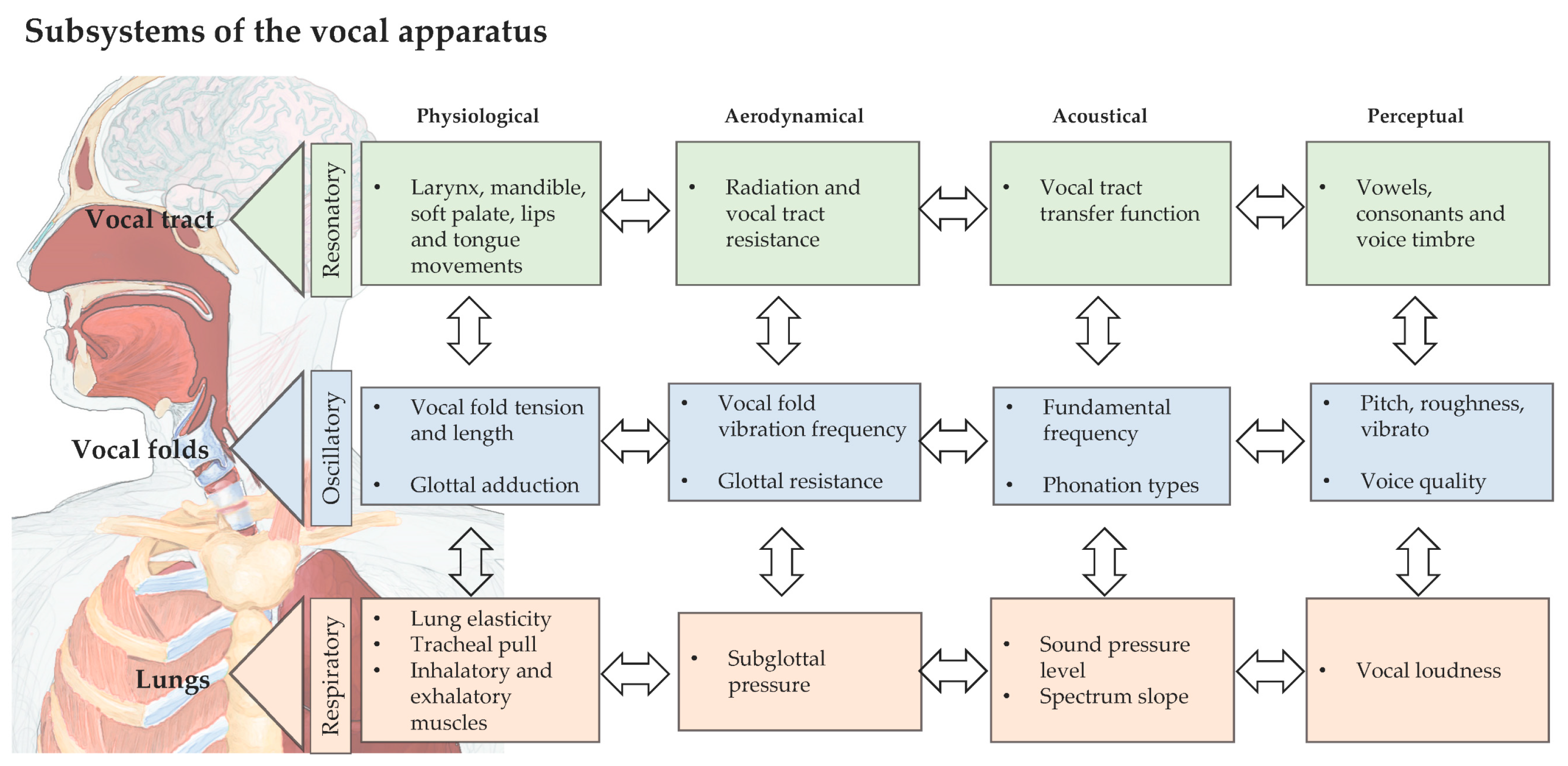
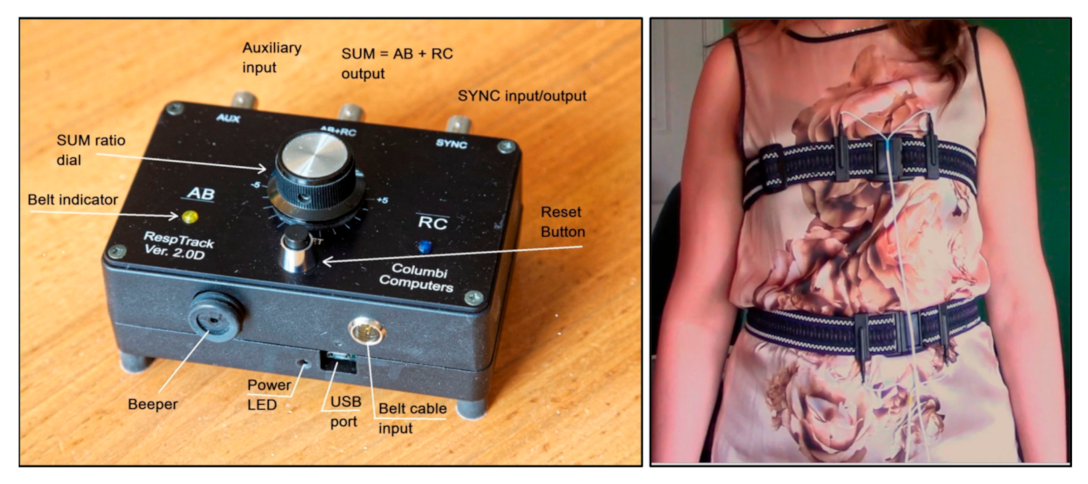

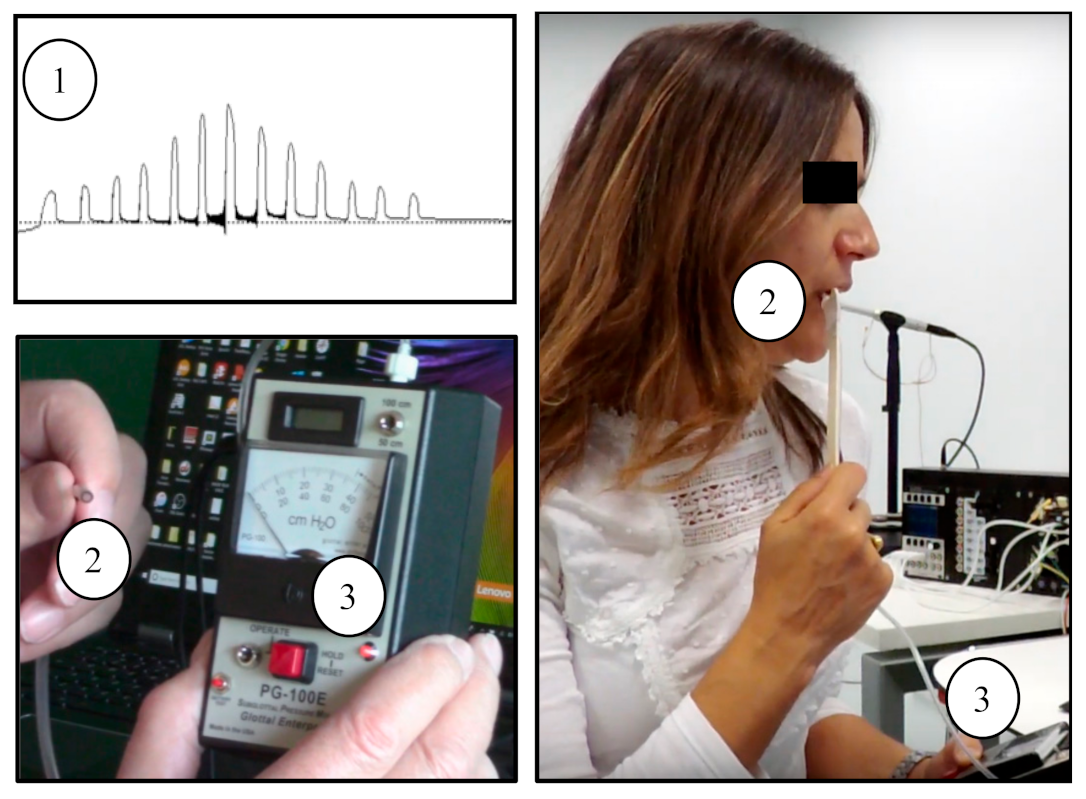
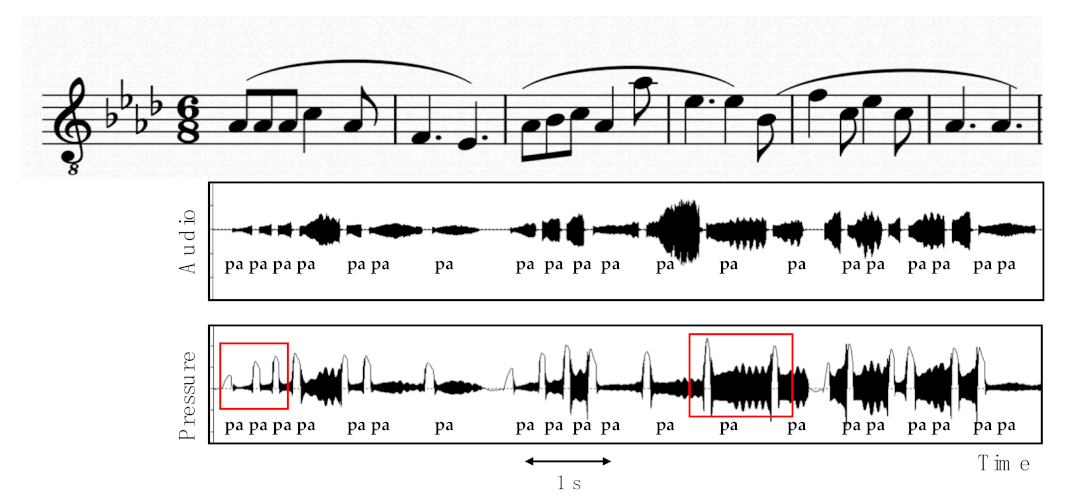
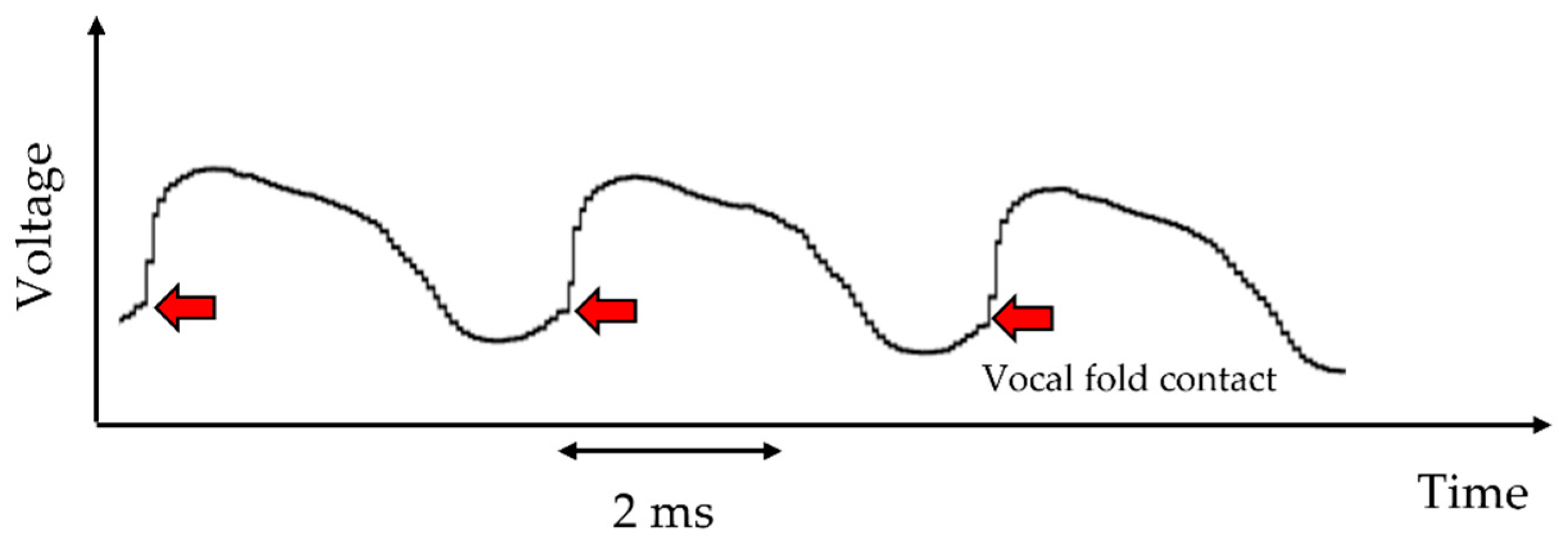
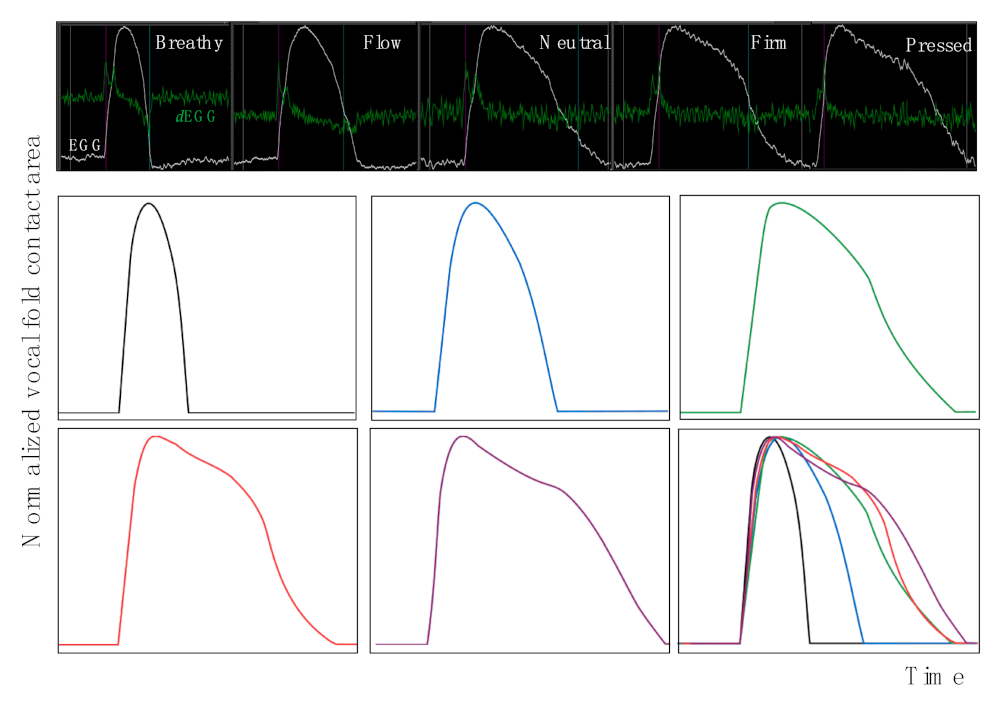

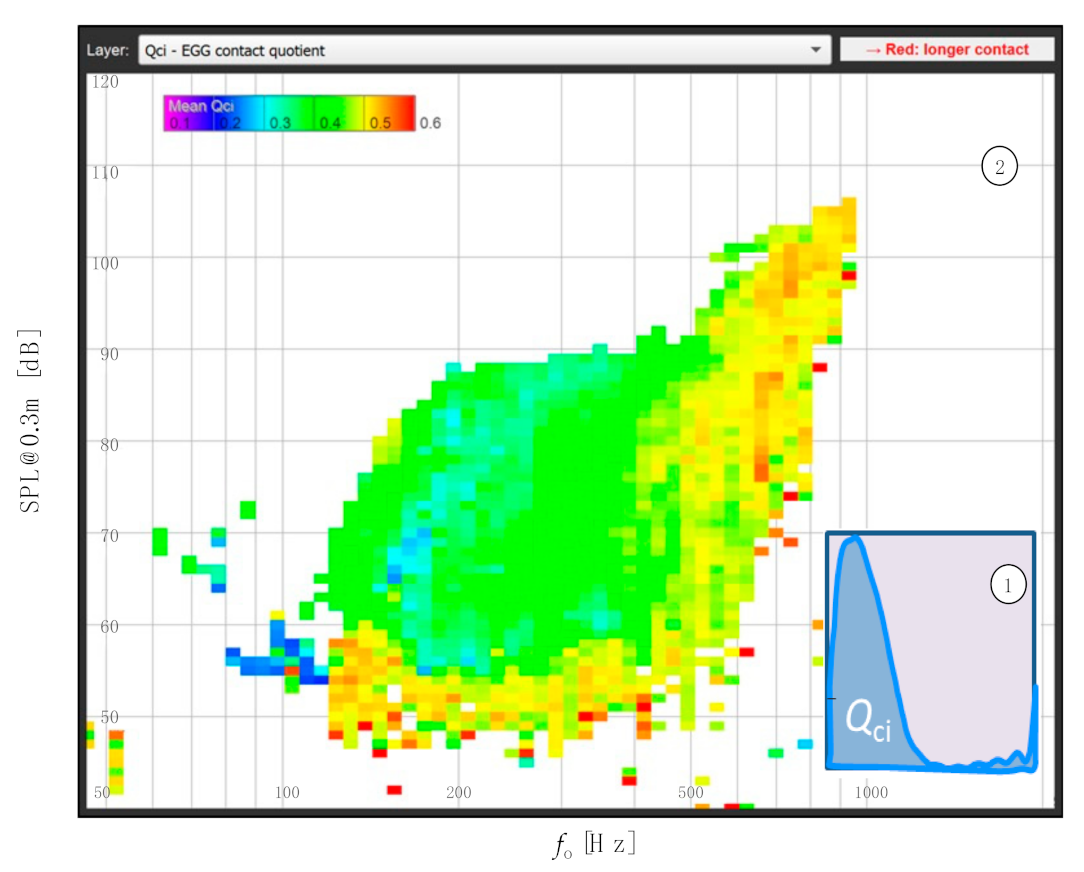
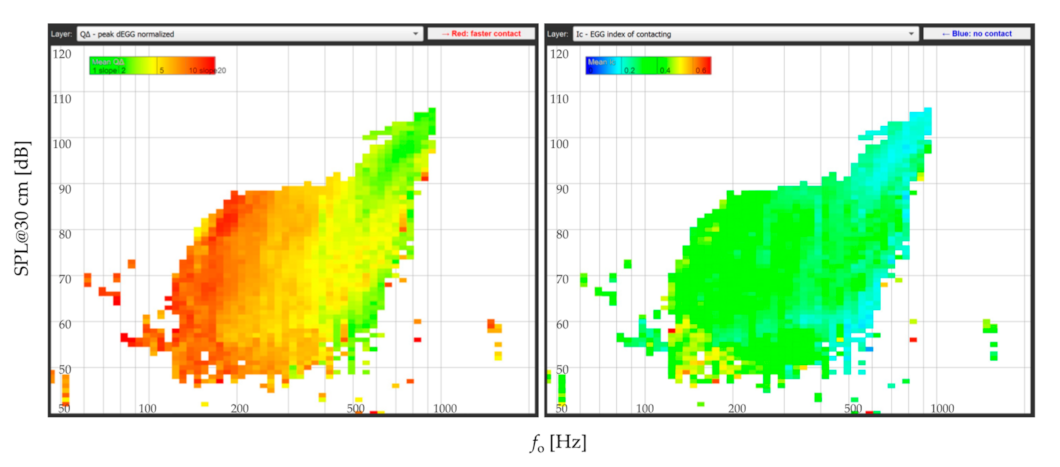


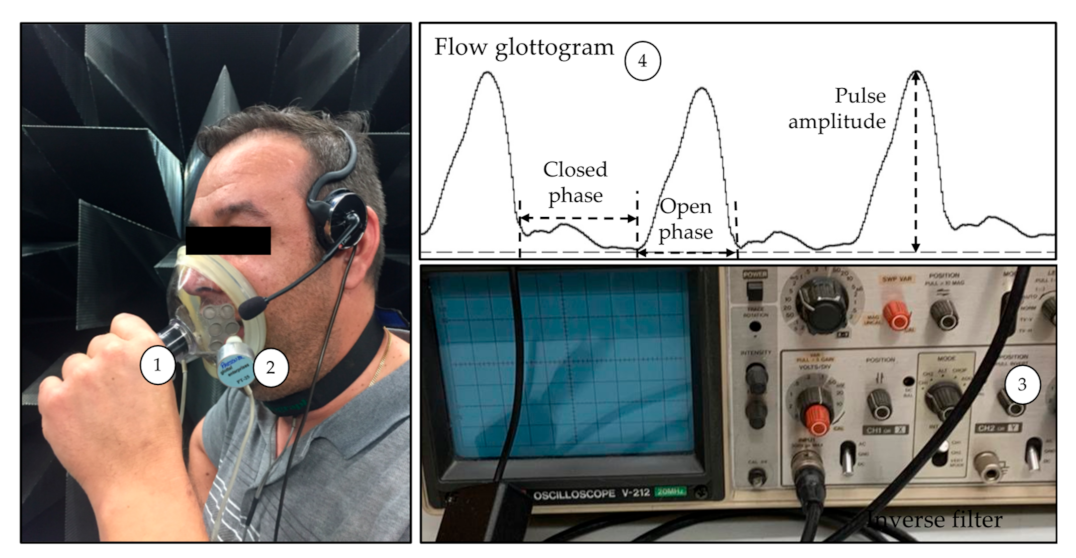
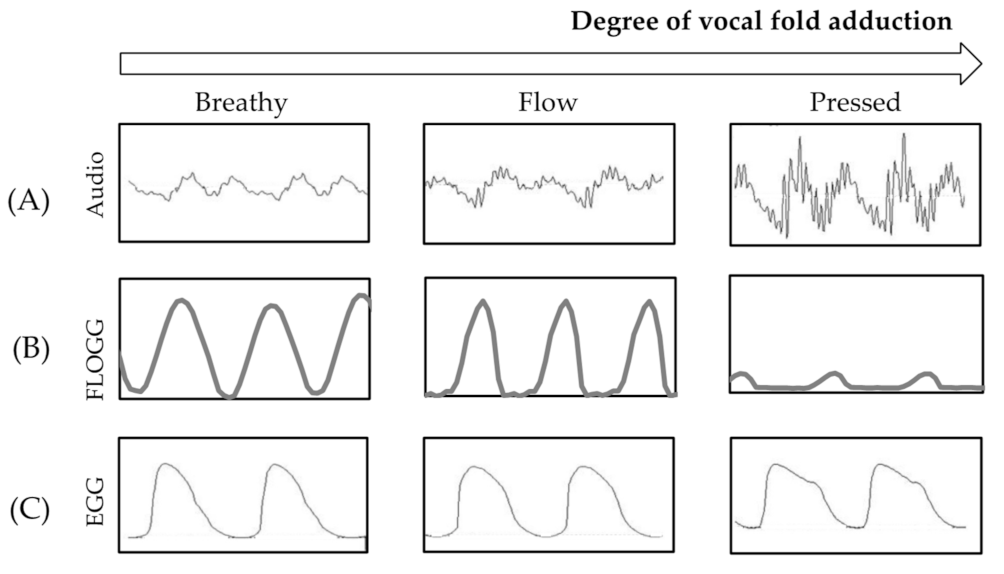
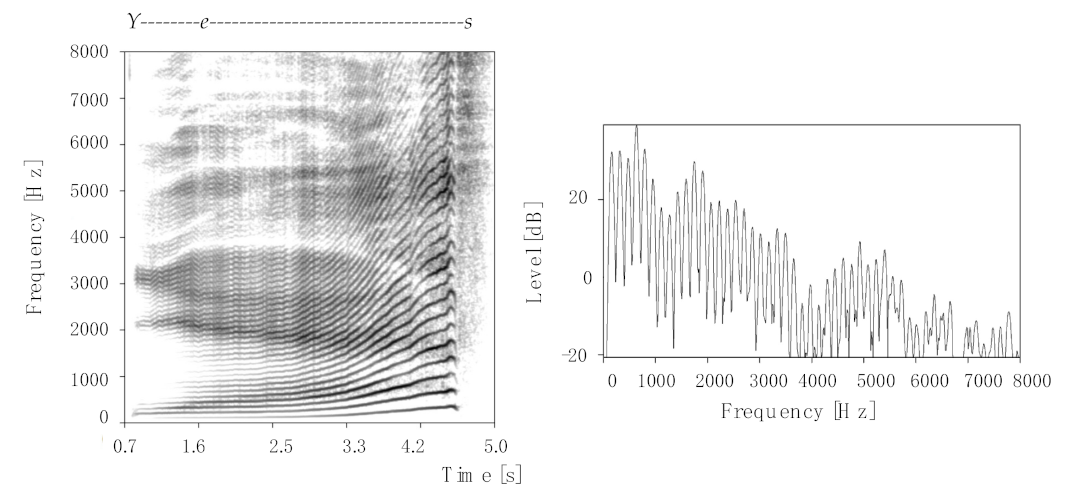

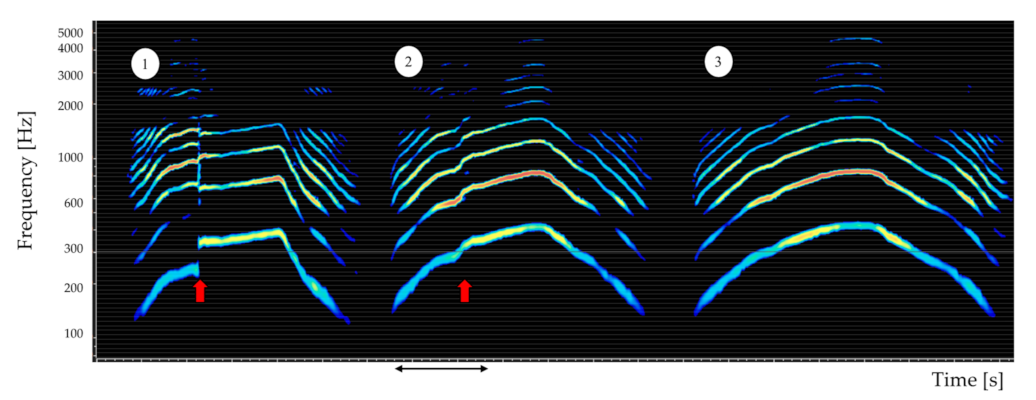

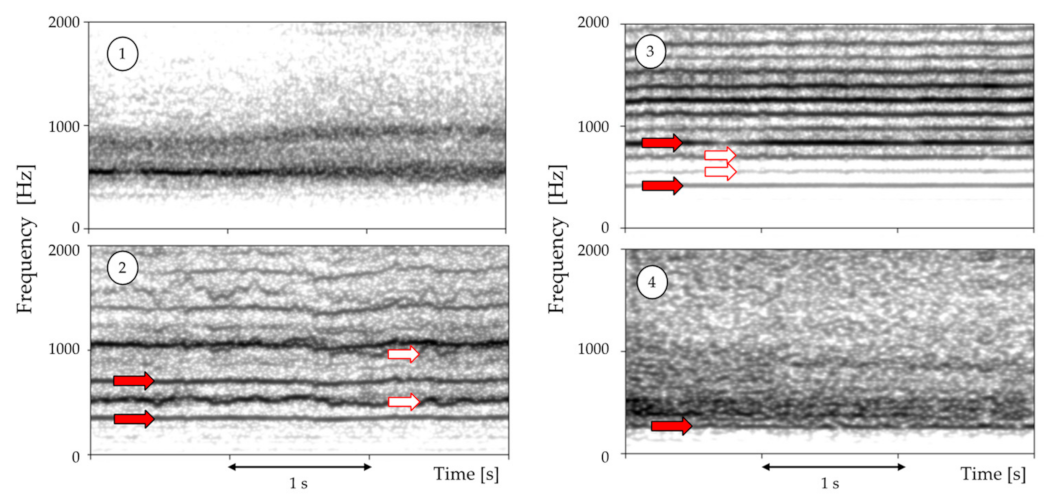

Publisher’s Note: MDPI stays neutral with regard to jurisdictional claims in published maps and institutional affiliations. |
© 2022 by the authors. Licensee MDPI, Basel, Switzerland. This article is an open access article distributed under the terms and conditions of the Creative Commons Attribution (CC BY) license (https://creativecommons.org/licenses/by/4.0/).
Share and Cite
Lã, F.M.B.; Fiuza, M.B. Real-Time Visual Feedback in Singing Pedagogy: Current Trends and Future Directions. Appl. Sci. 2022, 12, 10781. https://doi.org/10.3390/app122110781
Lã FMB, Fiuza MB. Real-Time Visual Feedback in Singing Pedagogy: Current Trends and Future Directions. Applied Sciences. 2022; 12(21):10781. https://doi.org/10.3390/app122110781
Chicago/Turabian StyleLã, Filipa M. B., and Mauro B. Fiuza. 2022. "Real-Time Visual Feedback in Singing Pedagogy: Current Trends and Future Directions" Applied Sciences 12, no. 21: 10781. https://doi.org/10.3390/app122110781
APA StyleLã, F. M. B., & Fiuza, M. B. (2022). Real-Time Visual Feedback in Singing Pedagogy: Current Trends and Future Directions. Applied Sciences, 12(21), 10781. https://doi.org/10.3390/app122110781





